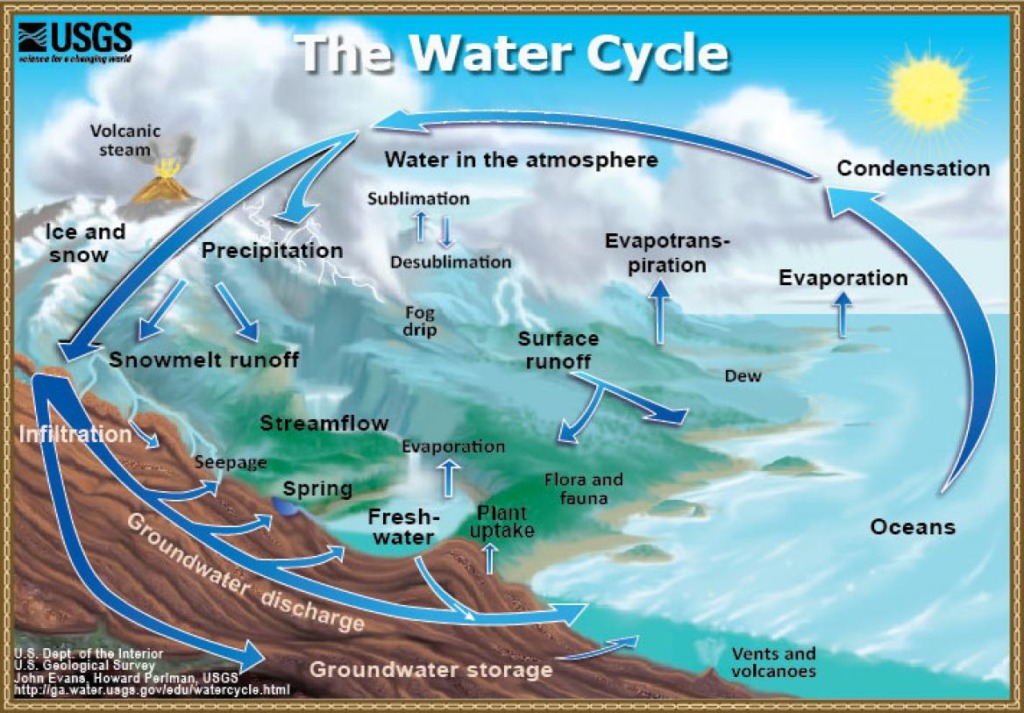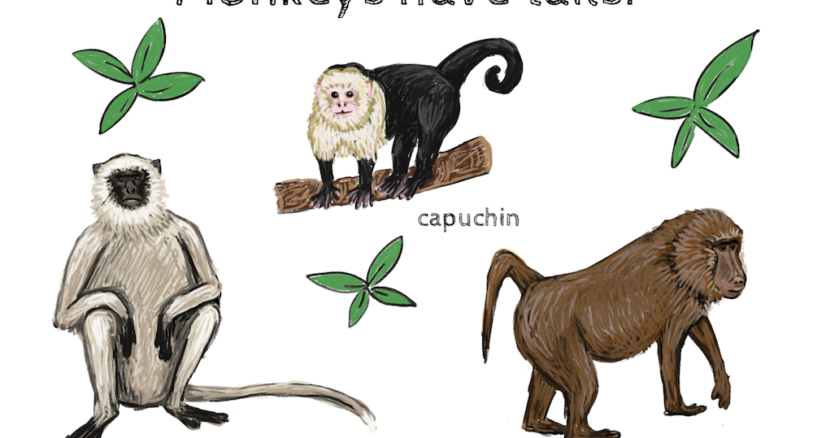By Lisa Algee
3rd–5th grade (upper elementary/primary)
Note: This is lesson 1 in a 4-part series on the water cycle, photosynthesis, exploring ecosystems, and scientific inquiry in local ecosystems. Find lessons 2, 3 and 4 here (click relevant link).

Overview
Purpose: The purpose of this lesson is two-fold: (a) for teachers and students to co-construct meaning together in understanding what the water cycle is and how it works, and (b) to bring awareness to the importance of water cycles and appreciate the vast differences between water cycles in rainforest regions compared with water cycles in areas around the USA.
Key concepts: evaporation, transpiration, sublimation, condensation, precipitation, and collection.
Research based: Sociocultural theory with an emphasis on co-constructing knowledge and negotiating meaning using Wells (1999, 2002, 2010) model, ‘Spiral of learning and teaching through inquiry’.
Materials: Internet access, dictionary, pencil, markers, crayons, colored pencils, scissors, and tape.
Procedure:
Note: Use the Student Water Cycle Worksheet and the Teacher Information Sheet for Lesson 1.
Wells’ model, “Spiral of learning and teaching through inquiry,” in action:
I. Tapping into students’ prior knowledge and experiences:
Pre-assessment: (Use pdf)
II. Gathering information:
Students can seek information from the teacher, Internet, books, dictionaries, articles, consulting experts, etc., on water cycles. Allow students time to gather information to answer the questions in the Student Water Cycle Worksheet (pdf).
III: Co-constructing knowledge together:
Allow students time to (1) share their information from their StudentsWater Cycle Worksheet with you, and (2) cut all four water cycle stages (on the dotted lines) and place them in a circle which represents a logical sequence. Note: 3rd graders may need more scaffolding with this so you may want to pair the 3rd graders with the 4th graders. Go around the room and ask each pair of students to explain their sequence to you. Once you have done this preliminary assessment, you can add to what they have using the information in your Teacher Information Sheet (pdf)
IV. Understanding
Demonstrating understanding through post-assessment and activities (see below for activities):
Post-assessment: (Use pdf)
Activities:
1. Water cycle mobile
2. Comparing local and rainforest water cycles
3. Causal relationships
4. Water cycle play
5. Water cycle: take action!
Additional resources, from Nasa.gov:
https://gpm.nasa.gov/education/water-cycle
Credit: All content created by Lisa Algee. You can contact Lisa at algeelisa[at]gmail.com





